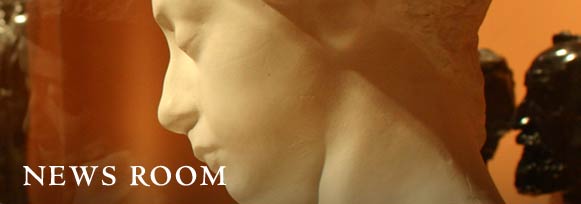Exhibition And Conference Focus On Computer Games
"Fictional Worlds, Virtual Experiences: Storytelling And Computer Games"
November 12, 2003–March 28, 2004
Video games shape our culture. It's time we took them seriously. —Henry Jenkins, "Art Form for the Digital Age," Technology Review (Sept.–Oct. 2000)
Stanford, CA, September 24, 2003—Computer games and the narratives that propel them are the focus of an exhibition opening November 12 at the Cantor Arts Center at Stanford University. Fictional Worlds, Virtual Experiences: Storytelling and Computer Games, on view in three galleries through March 28, 2004, is scheduled to coincide with two related exhibitions at the Yerba Buena Center in San Francisco that open in late January 2004. The exhibition is made possible by the Lynn Krywick Gibbons Gallery Exhibition Fund and the Cantor Arts Center members.
Computer games are among the newest vehicles for telling stories and creating virtual worlds. This interdisciplinary and interactive exhibition lays out the history and cultural importance of interactive simulations, computer games, and video games, proposing that they represent the emerging narrative form and communication medium of the early 21st century. Physical artifacts, a timeline, and video clips will demonstrate how text, graphics, and interactivity have established a narrative framework in computer games. The exhibition features the projection of a networked, "massively multiplayer" virtual world, and interactive game stations immerse visitors in the storytelling aspects of games, while challenging them to contemplate the history and the future of virtual gaming.
The exhibition derives from research of the "How They Got Game Project" at the Stanford Humanities Laboratory, a project seeking a path-finding narrative for the historical and critical appreciation of computer and video games. Fictional Worlds is guest-curated by Dr. Henry Lowood, Curator for History of Science & Technology Collections, Stanford University Libraries, in collaboration with Casey Alt, graduate student in the Program for History and Philosophy of Science.
"The Cantor Arts Center encourages Stanford University faculty and students to utilize the museum for research and as a showcase for campus initiatives," said Patience Young, the curator for education who is the coordinating curator for the exhibition. "This show bridges the worlds of art and technology in ways that we expect to be provocative and informative for museum visitors of all ages and backgrounds."
Free Conference
Story Engines: A Public Program on Storytelling and Computer Games
This conference, inspired by the Fictional Worlds, Virtual Experiences: Storytelling and Computer Games exhibition, brings together scholars and game developers to present current thinking about the place of storytelling in computer and video games. Friday, February 6, from 9 am to 5 pm
Open to the public, no admission fee; no reservations, open seating
Fairchild Auditorium, 291 Campus Drive, near the Cantor Arts Center at the Stanford Medical Center
Call 650-725-3155 for information
9am
Introduction and Master of Ceremonies
Tim Lenoir
9:15-10:30am
Morning Session I:
Keeping It Real: Performance and Realism
Henry Lowood, Stanford University. On narrative in historical/military simulations.
Jane McGonigal, UC Berkeley. From her work on gameplay in everyday spaces.
10:45am-noon
Morning Session II:
Embodiment: What's It Like to be in a Digital Narrative?
Scott Bukatman, Stanford University.
Casey Alt, Stanford University. On the space of the digital narrative in early narrative game genres.
Lunch Break
1:15-2:30pm
Communities and Characters
Kevin O'Hara, Sony Online Entertainment. How player communities shape and contribute to the story worlds of online games.
Katherine Isbister, Stanford University. From her work on character development in computer and video games.
Coffee Break
3:15-5:15pm
The Big Picture: Do Games Need Stories?
Haden Blackman, LucasArts
Warren Spector, Ion Storm
Will Wright, Maxis/E



